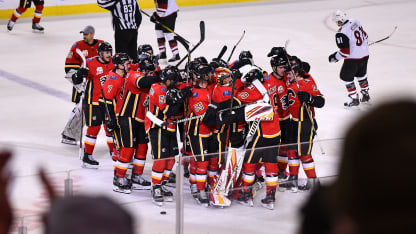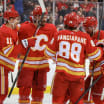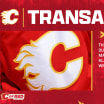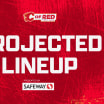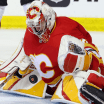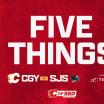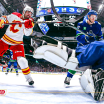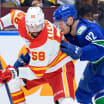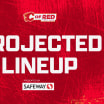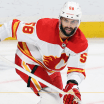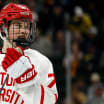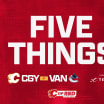The current format was adopted at the beginning of the 2015-16 season as a way to add excitement to the game and limit the number of shootouts that often followed a sleepy, 4-on-4 session. Since then, 49 of the Flames' 348 regular-season tilts have gone the distance, with the squad compiling a 32-17 all-time record in 3-on-3 decisions, including a 2-3 mark in the first quarter this year.
"It's important to work on it," said Sean Monahan. "More than ever, games are going to OT. It's a close league, you want that extra point, and if you can get the chemistry going [in practice], that's huge.
"It's tough to have a game plan. There's a lot of room on the ice and you obviously have to capitalize. If a team's going on a change, you don't want to give away the puck, and obviously faceoffs are huge.
"That's the key."
With a 65% winning percentage in the first four seasons under this format, the Flames have earned - on average - 7.5 of a possible 11 standing points per season when the game is deadlocked through 60.
Or the difference - if you take last year, for example - between first and third in the Pacific.
So, yes, the benefits are tangible, and identifying your strengths (and weakness) early ought to pay off in the long run.
Ditto when it comes to pre-scouting the opposition.
"3-on-3, when it first came into the league, it was just wide open, up and down," said Peters. "So, depending on the personnel, depending on the team, depending on where you are in the standings, I think it's tightened up a little bit, so you've got to manage the puck.
"Today, when we scrimmaged 3-on-3, all the offence was off turnovers. Somebody had it offensively, they forced it - impatiently - and the other team went back the other way.
"They can learn from that. We can learn from that. You see that in the league, too. You get a lot of 2-on-1's because there are two forwards and one D, so you get a lot of 2-on-1's where the forward is defending and he's caught back. They're trying to leave their feet and they're not exactly proficient at that."
